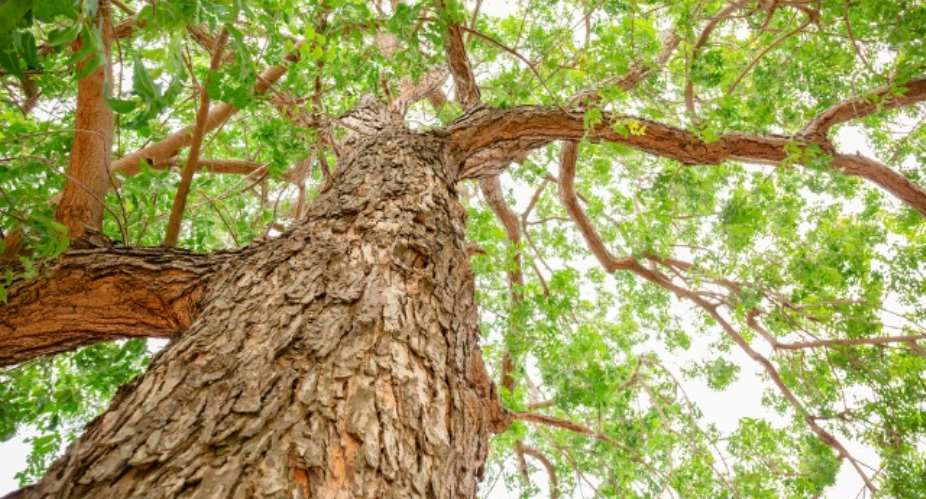In 1832, the Scottish merchant McGregor Laird led an expedition to the Niger Valley and out of 48 people that accompanied on the expedition, 37 lost their lives. These experiences led to the belief that Europeans could not survive in coastal West Africa, which came to be known as ‘The White Man’s Grave.’ Because Europeans noticed that Africans survived much better in the region from these fevers.
Despite malaria killing many Africans as well, they acquired resistance to malaria in their childhood, baffling European physicians.
The loss of the 37 explorers not only revealed that Europeans can’t settle in Africa that time but also demanded how Africans had been able to survive on that harsh continent of deadly malaria? From generation to generation, ancestors pass on their expertise in herbal medicine preparations to families. One of Africa’s powerful concoctions against malaria is prepared from leaves of a neem tree.
The neem tree, biological name (Azadirachta indica) is a unique tree, and the leaves are the most complex leaves on the planet. The neem tree has over 130 different biologically an active compound. The trees grow in tropical and semi-tropical regions.
About the Neem Tree:
Neem (Azadirachta indica) is a tree in the mahogany family. Native to India and throughout Southeast Asia, neem trees grow in tropical and semi-tropical regions. The neem tree grows quickly and can reach heights over 100 ft tall. With its surprising variety of uses and benefits, the neem tree is known as the ‘cure of sickness’ in West Africa, because of its extreme bitterness.
The main components of neem leaves include protein (7.1%), carbohydrates (22.9%), minerals, calcium, phosphorus, vitamin C, and carotene. But the leaves also contain glutamic acid, tyrosine, aspartic acid, alanine, praline, glutamine and cysteine-like amino acids, and several fatty acids.
Without toothpaste or brush, a piece of chewed neem tree gives clean teeth and fresh mouth each morning. Another life-saving tree is the Kuntan tree (Uapacca Guiniensis.) The cover of the tree was used to treat fractured bones.
Enjoying corn porridge without sugar

The miracle berry or fruit, known as Asaba in the central region of Ghana, serves as sugar because it contains a protein called miraculin that tastes sweet enough to replicate the effect of sugar.
There was no sugar, yet our ancestors enjoyed herbal tea and cornmeal porridge. A plant which bears small reddish fruit, called miracle fruit, serves as a substitute for sugar. The protein called miraculin that tastes sweet enough to replicate the effect of sugar. After eating berry fruit, everything sour, such as lemon or vinegar tastes sweet in the mouth.
Africa is endowed with many plants that can be used for medicinal. Some of the herbs heal high blood pressure, skin diseases, sore throat, arthritis, digestive problems etc. Many of the drugs consumed throughout the world for health purposes, were manufactured from herbs taken from Africa and Asia because those herbs grow in tropical countries. For example, African ginger is a very powerful medicine.
Many around the world wonder how Africans live, especially those in the villages without electricity. Frankly speaking, there is everything available to make life easy for them just like those living in modern cities. Before health centers were built our ancestors deliver babies at home successfully and the child’s umbilical cord was treated with herbal medicine.
Food Preservation in Africa
Have you ever wonder how Africans preserved food without electricity? If there is no electricity, there wouldn’t be any fridge or storage facilities but the food is best preserved in such a way that it doesn’t get rotten. With smoldering wood, generating intensive heat, which adds a layer of desiccation to preserving qualities, fish, meat and other kinds of seafood are smoked. The heat of the fire dehydrates all the liquid from the fish or meat and makes it last longer without rotten.

Fish smoking is one of the oldest traditional ways of food preservation in Ghana.
Salt and the sun also play a major role in traditional food preservation in Africa. For example, fish are well preserved with salt and Cocoa beans are spread in the sun to dry for many days, before they are exported or used to manufacture cocoa products, such as chocolates, drinks, beverages and body lotions consumed locally.
Related topic: ModernGhana news reference- The Palm Tree: The Subsistence Of Life In Africa - Modern Ghana





 We’ll no longer tolerate your empty, unwarranted attacks – TUC blasts Prof Adei
We’ll no longer tolerate your empty, unwarranted attacks – TUC blasts Prof Adei
 Bawumia donates GHc200,000 to support Madina fire victims
Bawumia donates GHc200,000 to support Madina fire victims
 IMF to disburse US$360million third tranche to Ghana without creditors MoU
IMF to disburse US$360million third tranche to Ghana without creditors MoU
 Truck owner share insights into train collision incident
Truck owner share insights into train collision incident
 Paramount chief of Bassare Traditional Area passes on
Paramount chief of Bassare Traditional Area passes on
 Two teachers in court over alleged illegal possession of BECE papers
Two teachers in court over alleged illegal possession of BECE papers
 Sunyani: Victim allegedly shot by traditional warriors appeals for justice
Sunyani: Victim allegedly shot by traditional warriors appeals for justice
 Mahama vows to scrap teacher licensure exams, review Free SHS policy
Mahama vows to scrap teacher licensure exams, review Free SHS policy
 Government will replace burnt Madina shops with a new three-story, 120-store fac...
Government will replace burnt Madina shops with a new three-story, 120-store fac...
